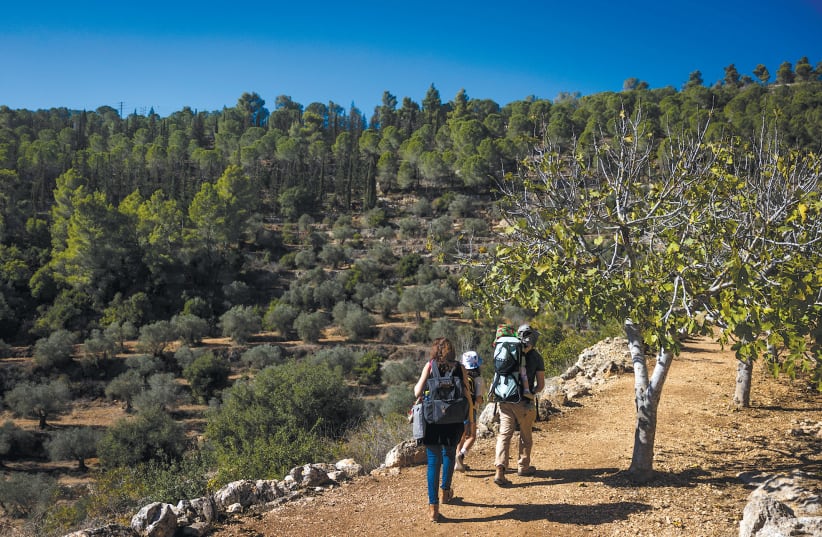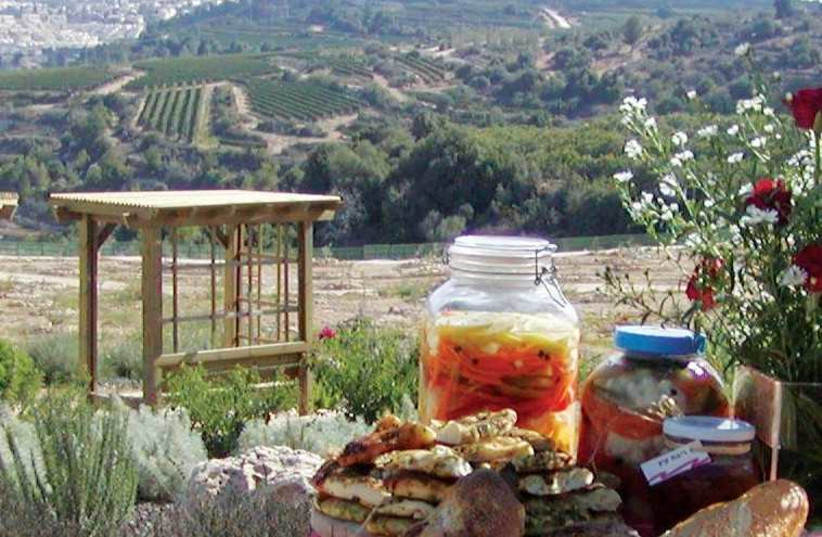
It starts like a prayer. A consistent theme in Jewish prayer is to praise God by way of acknowledging and connecting to the miracles and wonders of the universe. By taking the time to pay attention to, appreciate, and praise the tiny but miraculous things happening all around us, Judaism seems to be showing us that we can balance ourselves personally, and bring ourselves closer to the source of all things. At least that’s the principle as I understand it.
In the context of Zionism, of returning and reconnecting to our ancestral land, one way of doing this is to notice, appreciate, and learn about the remarkable creatures that share our homeland, and in doing so to get to know our land better. Especially during this dark time for the Jewish people when so many are trying to destroy us, stepping out into nature, learning about, and marveling at the hidden wonders of our country can be a meaningful way of reconnecting to our land, our strength, and our heritage.
For this first article, we’ll be looking at the Jerusalem Hills region – a green, hilly region easily accessible from metropolitan Jerusalem – and talking about some of the remarkable, hidden animals and plants that you might find living there sharing the land with us. That’s why I want to tell you, among other things, about beetles.
Living emeralds
British evolutionary biologist J.B.S. Haldane once said: “The Creator, if he exists, must have an inordinate fondness for beetles.” Given that there are over 400,000 species of beetle known to science, which makes up about 25% of all life on Earth, it must be said that beetles are worth noticing. In the Jerusalem Hills, however, there’s an additional reason to stop and notice beetles: Some of them shine like living gemstones.
This trait is thought to keep them safe from birds, which are apparently just as surprised at seeing a little flying green emerald as humans are. One of the most remarkable things about these strange creatures, however, is that they’re not even green.
These beetles possess no green pigment whatsoever. Rather, their eye-catching iridescence and coloration are the result of a trick of physics, a physical feature of their exoskeleton that traps, manipulates, and then reflects light in such a way that it appears green. While this phenomenon is being studied by physicists and engineers, nobody has yet succeeded in fully replicating this marvel of nature.
Iridescent green beetles, of several different families, can be found in the Jerusalem Hills in the spring and early summer. They are harmless and can be safely picked up and handled (gently), although many of them may attempt to fly away, making an almost comical, helicopter-like buzzing sound as they do. Next time you’re in the Jerusalem Hills, try to find one of these strange little guys.
Like pine cones with legs
If you’ve never seen a hedgehog in the wild before, I highly recommend you go find one. These peculiar Jerusalem inhabitants are as intriguing as they are hilarious, built like little spiny tanks that curl into a ball when scared, rummaging along the forest floors of the Jerusalem Hills, and making funny grunting noises all the while.
Hedgehogs are mostly nocturnal, so to have the best odds of finding one, I recommend looking just after dark or very early in the morning. You can also lay out food for them, just don’t offer them milk, as hedgehogs are lactose intolerant.
Additionally, these Jerusalemites have a strange habit that’s not well known: When they come across a strong, toxic-smelling substance, like cigarette butts for example, they will chew it into a pulp, and then rub it on their spines. It’s not entirely known why they do this odd behavior, although some theorize that it makes them less appetizing to predators.
Then again, being allergic to lactose and smelling like cigarettes is something that hedgehogs seem to have in common with many of their fellow Jerusalemites. Maybe it’s not so odd after all.
Plants with a plan
If you walk the hills west of Jerusalem at just the right time in the spring, you might just find an Arum flower. This bizarre, striking flower has been used in traditional medicine in this region since ancient times, although it’s toxic if not prepared properly.
It consists of a large, dark purple petal in the shape of a funnel, jutting out of the ground. What you might not know at first, however, is that there’s way more to this Jerusalem native than meets the eye. This is a plant with a plan.
First, there’s the smell. Far from most flowers that smell like flowers, the Arum flower has a faint odor of rotten meat, and there’s a pretty good reason why. As a plant that flowers only briefly, it really has to make sure that insects notice and pollinate it, something that might be hard to achieve with the usual bees or butterflies. That’s why the Arum turned to flies, attracting them with the smell of rotten meat.
But that’s not all. Not content with just smelling like an animal, the Arum went a step further still, developing the ability to generate its own heat, mimicking the heat of an animal. This unique ability, called thermogenesis, is extraordinarily rare in plants. For flies, this combination of smell and heat is quite convincing.
And the trickery isn’t over. The flies come to the “meat” flower, expecting food, but when they get down the center of the funnel they find that the downward-facing hairs in the center of the flower make it impossible for them to escape. They’re trapped in the center of the flower, surrounded by nothing but the flower’s pollen that it needs to pass on to another Arum in order to reproduce.
After a day the flower releases the flies, which are at this point covered in pollen, to fly away free, or at least until they fall prey to another Arum.
Strange though it may be, this seemingly alien micro-drama has been playing out in the hills of our ancestral homeland for millennia. Next time you’re out and about, see if you can witness it.
Brilliant disguise
It’s hard to talk about connecting to our environment without mentioning a particular arachnid, a local Jerusalemite that can be found all throughout our summers, which has mastered this skill to an incredible degree. I’m talking about the crab spider.
Look at a patch of flowers carefully for long enough, and you might just spot one of these little guys, resting, impeccably camouflaged, in the center of a flower, waiting for an unsuspecting insect to come by.
Like most denizens of the Jerusalem Hills, however, there’s a lot more to the crab spider than meets the eye. It possesses a trait called phenotypic plasticity, whereby if left on a flower of a certain color, over a period of weeks the spider slowly transforms to match that color.
This mysterious ability is still poorly understood, but somehow, in some way, the world that the spider sees around it impacts it on a physical level.
While we’re still not sure how it’s done, the end result is remarkable: crab spiders in every shade of yellow, white, and even pink and purple, each precisely suited to its own particular flower. What better metaphor is there for connecting to your home than that?
Go find some natural wonder
In the closing statement of his 1859 book On the Origin of Species, Charles Darwin, the father of evolutionary theory, referred to the many forms of life on our planet as “endless forms most beautiful,” implying that each form is more remarkable than the last. The green forests and mountains around Jerusalem are full of all sorts of natural wonders and fascinating creatures, all of which are an integral part of our homeland and of the heritage of the Land of Israel.
So, the next time you’re looking for a way to connect to your roots, relax, or even just do something fun and healthy that will lift your spirits, I highly recommend a little adventure on one of the trails in the Jerusalem Hills. Who knows what fascinating things you might discover.
Suggested nature sites: Sataf Nature Trail; Canada Park Loop; Nahal Katlav; Ein Karem (Carob Trail, Bustan Park); and many more…
Travel time from downtown Jerusalem (by car): Less than 30 minutes
What to bring: Walking shoes, long pants, a hat, water, snacks as needed.■
The writer is a Los Angeles-born former lone soldier and evolutionary ecologist-in-training, currently based in Ashkelon. He is interested in everything from biology/ecology to politics and culture, to neuroscience, perception, and cognition. He spends a good deal of time wandering through various deserts conducting biological experiments, or finding some strange animal during his fieldwork and trying to convince his wonderfully patient wife to let him bring it home. When he’s not in the field, he can also sometimes be found at his desk editing newspapers and magazines, or even writing from time to time.
The Environment and Climate Change portal is produced in cooperation with the Goldman Sonnenfeldt School of Sustainability and Climate Change at Ben-Gurion University of the Negev. The Jerusalem Post maintains all editorial decisions related to the content.

